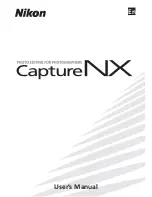
AT-S63 Management Software Features Guide
Section IV: SNMPv3
221
Overview
The SNMPv3 protocol builds on the existing SNMPv1 and SNMPv2c
protocol implementation which is described in Chapter 4, “SNMPv1 and
SNMPv2c” on page 87. In SNMPv3, User-based Security Model (USM)
authentication is implemented along with encryption, allowing you to
configure a secure SNMP environment.
In addition, SNMP terminology changes in the SNMPv3 protocol. In the
SNMPv1 and SNMPv2c protocols, the terms
agent
and
manager
are
used. An agent is an SNMP user while a manager is an SNMP host. In the
SNMPv3 protocol, agents and managers are called
entitie
s. In any
SNMPv3 communication, there is an authoritative entity and a non-
authoritative entity. The authoritative entity checks the authenticity of the
non-authoritative entity. And, the non-authoritative entity checks the
authenticity of the authoritative entity.
With the SNMPv3 protocol, you create users, determine the protocol used
for message authentication as well as determine if data transmitted
between two SNMP entities is encrypted. In addition, you can restrict user
privileges by determining the user’s view of the Management Information
Bases (MIB). In this way, you restrict which MIBs the user can display and
modify. In addition, you can restrict the types of messages, or traps, the
user can send. (A trap is a type of SNMP message.)
After you have created a user, you define SNMPv3 message notification.
This consists of determining where messages are sent and what types of
messages can be sent. This configuration is similar to the SNMPv1 and
SNMPv2c configuration because you configure IP addresses of trap
receivers, or hosts. In addition, with the SNMPv3 implementation you
decide what types of messages are sent.
Note
For the SNMP RFCs supported by this release of the AT-S63
software, see “Remote SNMP Management” on page 44.
This section further describes the features of the SNMPv3 protocol. The
following subsections are included:
“SNMPv3 Authentication Protocols” on page 222
“SNMPv3 Privacy Protocol” on page 223
“SNMPv3 MIB Views” on page 224
“SNMPv3 Storage Types” on page 226
“SNMPv3 Message Notification” on page 227
“SNMPv3 Tables” on page 228
“SNMPv3 Configuration Example” on page 232
Summary of Contents for AT-S63
Page 14: ...Figures 14 ...
Page 18: ...Tables 18 ...
Page 28: ...28 Section I Basic Operations ...
Page 58: ...Chapter 1 Overview 58 ...
Page 76: ...Chapter 2 AT 9400Ts Stacks 76 Section I Basic Operations ...
Page 96: ...Chapter 5 MAC Address Table 96 Section I Basic Operations ...
Page 114: ...Chapter 8 Port Mirror 114 Section I Basic Operations ...
Page 116: ...116 Section II Advanced Operations ...
Page 146: ...Chapter 12 Access Control Lists 146 Section II Advanced Operations ...
Page 176: ...Chapter 14 Quality of Service 176 Section II Advanced Operations ...
Page 196: ...196 Section III Snooping Protocols ...
Page 204: ...Chapter 18 Multicast Listener Discovery Snooping 204 Section III Snooping Protocols ...
Page 216: ...Chapter 20 Ethernet Protection Switching Ring Snooping 216 Section III Snooping Protocols ...
Page 218: ...218 Section IV SNMPv3 ...
Page 234: ...234 Section V Spanning Tree Protocols ...
Page 268: ...268 Section VI Virtual LANs ...
Page 306: ...Chapter 27 Protected Ports VLANs 306 Section VI Virtual LANs ...
Page 320: ...320 Section VII Internet Protocol Routing ...
Page 360: ...Chapter 30 BOOTP Relay Agent 360 Section VII Routing ...
Page 370: ...Chapter 31 Virtual Router Redundancy Protocol 370 Section VII Routing ...
Page 372: ...372 Section VIII Port Security ...
Page 402: ...Chapter 33 802 1x Port based Network Access Control 402 Section VIII Port Security ...
Page 404: ...404 Section IX Management Security ...
Page 436: ...Chapter 36 PKI Certificates and SSL 436 Section IX Management Security ...
Page 454: ...Chapter 38 TACACS and RADIUS Protocols 454 Section IX Management Security ...
Page 462: ...Chapter 39 Management Access Control List 462 Section IX Management Security ...
Page 532: ...Appendix D MIB Objects 532 ...
















































